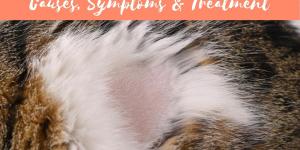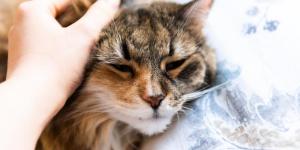Hypoglycemia in Cats - Causes, Symptoms And Treatment

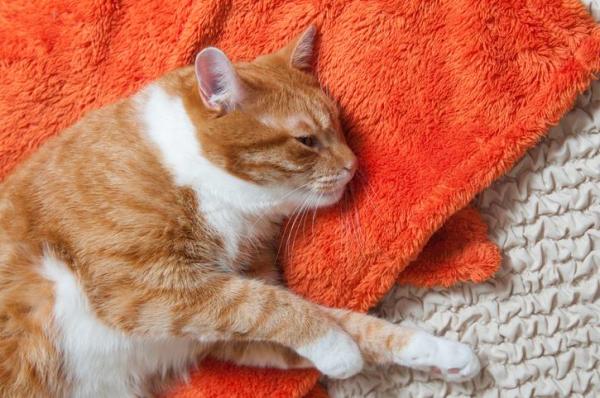

See files for Cats
Hypoglycemia is another term for low blood sugar. This refers to the levels of glucose in the blood, a carbohydrate which is vital in providing the cat with the energy they need to survive. While having too much glucose in the bloodstream is dangerous, so too is having too low blood glucose levels. Although cats eat a mainly animal protein-based diet, glucose can still be regulated. When the cat is unable to regulate their glucose levels it can lead to diabetes in cats.
We need to know about hypoglycemia in cats because having prolonged periods of low glucose levels can be very dangerous. This is why AnimalWised looks at the causes, symptoms and treatment of low blood sugar in cats. It will help you know what to look out for and what sort of treatment options are available.
What is hypoglycemia in cats?
Hypoglycemia is a drop in blood sugar (glucose) levels in an organism. Glucose is one of the main sources of energy, and the food source for the cat's brain.
When the glucose levels in a cat's bloodstream drop, the body's cells lose their fuel. For this reason, various bodily systems will begin to fail. If the blood sugar levels in a cat drop sufficiently, it can cause a loss of consciousness and can even be fatal.
It is important to note that hypoglycemia is not a disease in itself, but a symptom of underlying problems. However, there are signs of hypoglycemia in cats which we need to pay attention to. If the blood sugar levels of the feline are not stabilized, they are in danger.
Blood pressure changes in cats can cause similar symptoms to hypoglycemia, but they are not the same thing.
Causes of hypoglycemia in cats
The main causes of hypoglycemia in cats are:
- Insulin treatment can cause hypoglycemia in diabetic cats (if administered improperly)
- Tumor of the pancreas (insulinoma)
- Alteration of the liver (lipidosis, neoplasia, portosystemic shunts, glycogen storage disorders)
- Sepsis
- Feline infectious peritonitis (FIP)
- Intestinal malabsorption
- Prolonged fasting
- Cushing's syndrome (hyperadrenocorticism)
- Prolonged seizures
- Erythrocytosis (increased red blood cells)
- Excess carbohydrates in the diet and a sharp reduction in proteins
Although glucose is a type of carbohydrate, this does not mean cats require more carbohydrates in their diet. Since felines are obligate carnivores, they are able to synthesize glucose from proteins. For a cat to have the best diet, they should not be given food rich in carbohydrates as it can lead to nutrient deficiency and other health problems.
Kittens are more predisposed to hypoglycemia than adult cats. The reason for this is because the liver is responsible for stabilizing blood glucose levels and theirs is still developing. If they are not fed enough, there is too long an interval between feedings, they are under stress or have an infection, it can influence hypoglycemia in kittens.
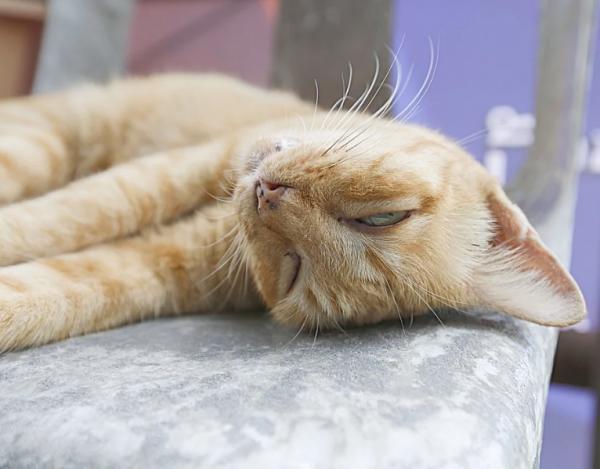
Symptoms of hypoglycemia in cats
Symptoms that can appear with hypoglycemia in cats include:
- Anorexia
- Increased appetite
- Blurry vision
- Lethargy
- Disorientation
- Anxiety or nervousness
- Increased heart rate (tachycardia)
- Low energy
- Confusion
- Loss of consciousness
- Tremors
- Ataxia
- Heart palpitations
- Seizures
- Depression
- Death
The extent of the cat's symptoms depend on the size of the drop in blood sugar levels. If the drop is not very high, the cat may become disorientated to a little shaky. However, ac acute drop in glucose levels can cause fainting, seizures and even going into hypoglycemia shock.
Diagnosis of hypoglycemia in cats
As you can see, many of the symptoms of hypoglycemia in cats are non-specific. They can be symptoms of various diseases. Even if we are sure the cat does have low blood sugar levels, this does not mean we know the reason why. To diagnose hypoglycemia, a blood test will need to be performed. When the cat's blood glucose is below 3.5 mmol/L, hypoglycemia is diagnosed.
However, the most striking and worrying symptoms of hypoglycemia in cats usually occur when blood glucose drops below 2.8 mmol/L. We will also need to look out for the following:
- Medication dose: inquire whether the dose of diabetes medication is too high, has not been updated or a dosing error has occurred.
- Malnutrition: if the cat is dehydrated and thin, consider malnutrition or a prolonged fast and investigate any underlying disease.
- Fever: if the feline has a fever, it should be thought that a microorganism in the blood is causing this problem, causing septicemia. The laboratory test may show leukocytosis (increased white blood cells), neutrophilia with a shift to the left or neutropenia with toxic neutrophils.
- Biochemistry of blood serum: a complete biochemistry of blood serum should be performed to look for alterations in liver enzymes in search of any liver disorder, in addition to an ultrasound with sampling if any alteration is observed.
- Ultrasound: an abdominal ultrasound will be performed to look for a tumor in the pancreas, intestine or liver.
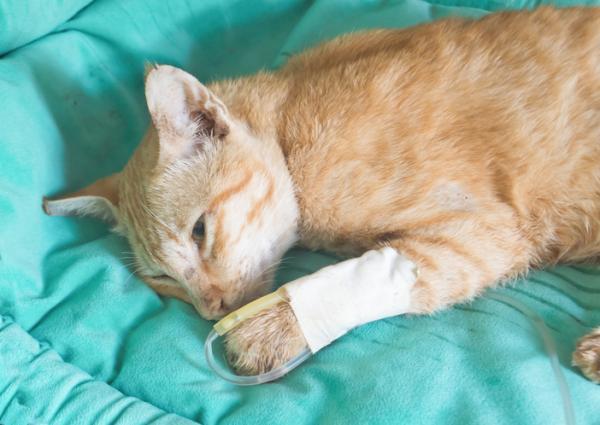
Treatment of feline hypoglycemia
Asymptomatic hypoglycemia is often resolved by feeding infrequent meals of a large-sized portion, especially in kittens. Honey can also be applied to the cat's lips to administer a fast source of glucose.
When a cat has already developed more or less severe hypoglycemic symptoms, it is necessary to take them urgently to a veterinary center for treatment. Said treatment may include:
- Serum with dextrose: intravenous administration of serum with dextrose. Rapid clinical improvement should be noted and glucose should be measured within 5-10 minutes of bolus dextrose administration. A glucometer can be used for this measurement, which is less stressful for the feline than other blood tests.
- Corticosteroids: in cases of insulin overdose in diabetic cats, corticosteroids such as dexamethasone at a dose of 0.1 mg/kg intravenously or prednisolone at a dose of 0.5 mg/kg orally should be used. They can then counteract the action of insulin.
- Intravenous glucagon infusion: for insulin overdose or when intravenous supplementation is ineffective, an intravenous glucagon infusion can also be used.
- Treatment of the disease: after stabilizing the cat, you should start treating the underlying disease if there is one, to avoid future hypoglycemia that can endanger the life of our cat
This article is purely informative. AnimalWised does not have the authority to prescribe any veterinary treatment or create a diagnosis. We invite you to take your pet to the veterinarian if they are suffering from any condition or pain.
If you want to read similar articles to Hypoglycemia in Cats - Causes, Symptoms And Treatment, we recommend you visit our Other health problems category.
- Harvey, A., Tasker, S. (Eds). (2014). Feline Medicine Manual. Ed. Sastre Molina, SL L ́Hospitalet de Llobregat, Barcelona, Spain
- I. Ferrero. (2014). Hypoglycemia in the cat. Infovet. Available at: https://www.infovet.es/veterinario-Hipoglucemias-en-el-gato-116.php



